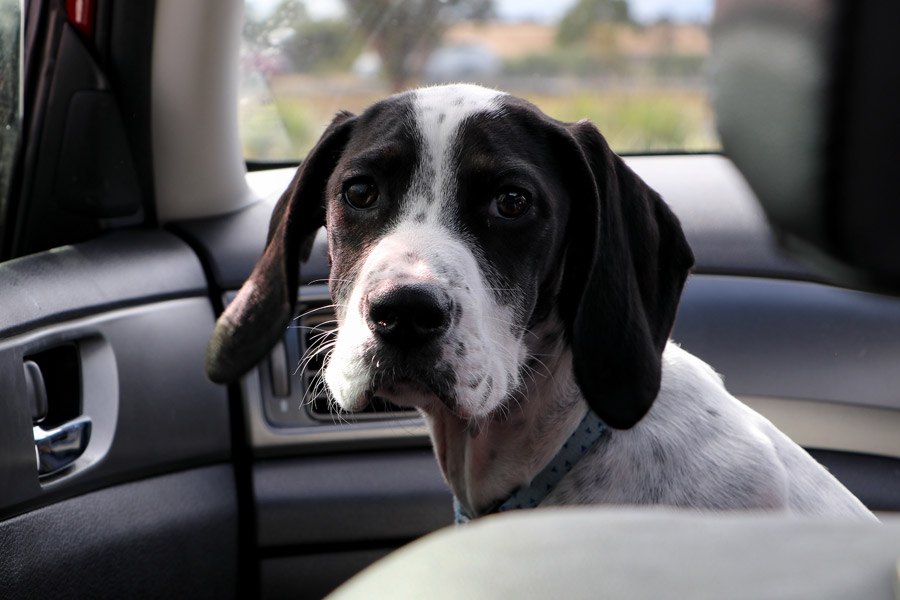Dog fears are common. They can affect dogs of all sizes, breeds and ages. As pet professionals, you can play a key role in identifying the signs and advising clients on how to best treat their dogs’ fear.
The definition of fear is ‘an unpleasant feeling triggered by the perception of danger, real or imagined.’ Fear is a deep-rooted emotion that arises with the threat of danger or harm. It triggers physiological and behavioural changes, such as hiding, freezing and fleeing.
Certainly, when you understand the huge impact fear can have on a dog—physically and emotionally—you can appreciate the need to alleviate fear in dogs. And, thankfully, there are ways to help dogs overcome their fears.
What are the most common dog fears?
No one wants his or her dog to be fearful. Aside from the impact fear can have on a dog’s wellbeing and happiness, it can lead to negative canine behaviour.
Therefore, understanding common dog fears and the signs to watch out for can assist both pet professionals and pet owners to address potential issues early on. Here are a few common dog fears to familiarise yourself with.
Fear of being left alone
Also known as ‘separation anxiety’, fear of being left alone is incredibly common in pet dogs. Unfortunately, if left untreated it can lead to anxiety disorder, which can have a detrimental effect on a dog’s health.
It’s not completely understood why some dogs develop separation fear and others don’t. What’s more, it can develop over time with one possible cause being a change in circumstances. For example, when pet owners change their normal daily routine; perhaps they return to work or they take up a new activity that requires more time away from the home.
In most cases, dogs begin displaying signs of separation anxiety within the first 15-30 minutes after the owner or handler leaves. Given that dogs are pretty darn clever, it’s not uncommon for them to start showing signs of anxiety or fear in anticipation of their owner leaving.
Signs include panting, pacing, whining, shivering and destructive behaviour, such as biting carpets, chewing furniture or digging the garden.
To help dogs overcome this fear you can encourage your clients to practice departure cues, such as picking up keys and putting their coat on, but to give their dog treats when doing so. This may help the dog to associate these cues with positive feelings, rather than the anxiety of being left alone.
Check out this post for more tips on overcoming fear of separation.

Fear of travel
Just like separation anxiety, car travel is a widespread dog fear. Aside from the fact some dogs can suffer from motion sickness, for other dogs, the fear is learned. It is based on previous negative experience.
For example, if the first time Fido takes a car ride he ends up at the vets and is poked and prodded, it’s not all that surprising he should develop a fear of travel. In Fido’s mind, the car = the vet.
If you have a client whose dog is reluctant about car journeys, try offering the following advice points.
It’s important to help dogs to form a positive reaction to car rides from early on. This might mean inviting the dog (ideally while he’s still young) to sit in the car and giving him a few treats. It might mean taking the dog on a short car ride to a fun place, like the beach or local dog park.
If motion sickness is a problem, anti-nausea medication may be helpful.
Making the car a pleasant and comfortable place to be can help alleviate the fear of travel. Try to keep the car temperature moderate, provide dogs with a seatbelt or restraint to keep them safe, and even playing calming music can be of help to some dogs.
Fear of children
Indeed, some dogs develop a very real fear of kids. It can be the fact children tend to be noisy, they’re a dab hand at teasing and pulling tails, or simply the fact they can be unpredictable! Really, the list goes on…
However, in most cases, a dog’s fear of children is due to a lack of early socialisation. In this instance, the dog will need training to modify their behaviour.
Desensitization is a long, slow process, but it is essential to make a dog’s interactions with kids less scary and more comfortable. You can advise clients to take things super slow and allow their dog to approach children in his or her own time. Recommend offering treats to reward positive interactions, even if they’re small.
Over time the aim is to close the distance between the dog and children while maintaining the dog’s comfort levels. Eventually, the dog should feel at ease amongst children, providing they know the boundaries (i.e. no tail pulling).
Dog fears can be incredibly troublesome—for the dog and its owner. Helping dogs to overcome their fears can help ensure they feel calm and well cared for, which can provide them with a better quality of life.
Image source: unsplash.com
Latest posts by Liz Walden (see all)
- Pet health: Medicinal cannabis for pets - December 27, 2021
- What pet business insurance do I need? - November 17, 2021
- Pet sitters: how to take time off - November 15, 2021










Leave A Comment